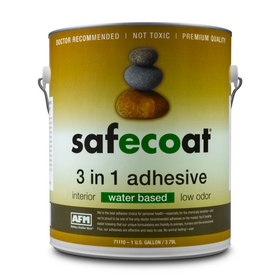
Cross Laminated Timber (CLT) in Home Building
Last Updated: Mar 29, 2025We all know, wood was never out of the picture, especially in residential buildings. But in the 21st century, a new sustainable wood product has been growing in popularity in Europe and is making its way worldwide. The product is cross-laminated timber (CLT). It is a form of "mass timber," a generic term known as massive timber or structural timber.
A type of engineered wood fabricated by gluing layers of solid-sawn lumber together, CLT was first developed in Austria in the early 1990s. The product didn't catch on until the 2000s when European architects and builders began using CLT in residential construction.
In the US and Canada, CLT can't yet compete with stick-frame construction in terms of cost. But in the 2010s, North American architects started using CLT in larger buildings to substitute for steel and concrete. In 2015, the International Building Code (IBC) incorporated CLT (jurisdictions across the US adopt IBC as their default). New changes will accept mass-timber structures up to 18 stories tall and be formalized into the IBC code this year.
Meanwhile, CLT is becoming popular in Canada and is making its way into the US market. Several states in the US have considered incorporating CLT into building codes. Here's what you'll want to know about CLT in residential construction.
Table of Contents
- What Is Cross-Laminated Timber (CLT) Construction?
- Where Is Cross Laminated Timber (CLT) Being Used in New Home Construction?
- What Are the Environmental Benefits of Cross Laminated Timber (CLT)?
- Do The Glues Used in Cross Laminated Timber (CLT) Off-Gas?
- How Tall Can a Cross Laminated Timber (CLT) Building Be?
- Is Cross Laminated Timber (CLT) Construction More Expensive?
- What Is the Future of Cross Laminated Timber (CLT) in Home Building?
- What Are the Pros and Cons of Cross Laminated Timber (CLT)?

What Is Cross-Laminated Timber (CLT) Construction?
A prefabricated building material, CLT is a panel made from planks of sawn and glued wood, which are layered perpendicular to each previous layer to create structural rigidity and resilience in both directions.
The panels are relatively simple to construct. After the lumber is selected, it's kiln-dried to achieve a moisture level of about twelve percent. (SmartLam, the first US-based CLT manufacturer, uses Douglas Fir, Western Larch, and SPF wood grade 2 or better). The manufacturer removes any wood defects and then, they trim the lumber to length.
After that, the boards are stacked with each layer perpendicular to the one below it. The fabricators spray the stacked boards with an adhesive, compress the boards in a hydraulic press, and cut the panels to size.
The panels are custom-manufactured to meet the building's specifications, then crane-guided onto the building site. North American CLT panels are usually three, five, seven, or nine layers of 2x6 lumber.

Where Is Cross Laminated Timber (CLT) Being Used in New Home Construction?
Architects and builders throughout Europe and Scandinavia have embraced CLT. Check out, for instance, The Meteorite, designed by architect Kivi Sotamaa in Finland. Sotamaa designed the three-story home entirely of locally grown CLT. He also designed the home using a system called "the misfit": two spaces that function as insulation, storage space, and housing for the home's mechanical and technical systems. In Estonia, Palmatin builds prefab, custom, and log homes throughout Europe using CLT.

Kariouk Architects in Ottawa has designed and constructed a prefab lake cottage with CLT.

In West Vancouver, engineer James Dean built his net-zero, modern Passive House using CLT. His team assembled the structure on the site in five days, which, Dean says, "accelerated the project schedule, reduced waste, and resulted in an extremely robust structure."

In the US, Cascade Built framed a 1,500-square-foot infill home in Seattle using CLT. "We were one of the first residential builders in the US to use it," founder and president Sloan Ritchie wrote in an article for The Journal of Light Construction.

EcoHouseMart in Forest Hills, New York, sells house kits that include CLT.

The mass-timber innovation is also being incorporated into multi-family projects. In collaboration with the developer Placetailor, architecture studio Generate has designed a five-story carbon-neutral apartment building in Boston using a CLT "kit of parts."
Building Materials
Shop high-performance building materials that are vetted for benefits to your health, your pocketbook, and the planet.

AFM Safecoat Almighty Adhesive Case of 12
AFM Safecoat
In Stock

AFM Safecoat 3 in 1 Adhesive
AFM Safecoat
In Stock

Quickscrews Cabinet Install Screws
Quickscrews
In Stock

AutoSlide Automatic Sliding Door System
Autoslide
Out of Stock
2 Colors

Autoslide Smart Tag Pet Door Kit
Autoslide
Out of Stock
2 Colors

AutoSlide Elite iLock Smart Tag Pet Door System
Autoslide
Out of Stock
2 Colors

Quickscrews Pan Head Pocket Hole Screws
Quickscrews
In Stock

Autoslide Elite Smart Tag Pet Door Kit
Autoslide
Out of Stock
2 Colors

Autoslide Motion Activated Pet Door System
Autoslide
Out of Stock
2 Colors

Quickscrews Square Flat Head Wood and Particle Board Screws
Quickscrews
In Stock

What Are the Environmental Benefits of Cross Laminated Timber (CLT)?
CLT is also considered sustainable, in part because it's made from wood, which is a renewable resource. Especially so when it is gathered from sustainably managed forests. Wood doesn't require fossil fuels to be burned during its production.
CLT is fabricated to specification at a factory, often using CNC (computer numerical control) technologies for precision cuts and less waste. The prefabricated pieces are assembled a few at a time, then shipped to the building site, thus avoiding massive on-site inventory and minimizing on-site disruption while decreasing costs. According to the softwood lumber industry, buildings constructed with mass timber or CLT are about 25% faster to construct than concrete buildings. They also require 90% less construction traffic.
According to Sotamaa, who designed The Meteorite, the project's CLT slabs have sequestered about 65 tons of carbon dioxide from the atmosphere. Using CLT rather than concrete or steel avoids the substantial carbon embedded in those materials.

Do The Glues Used in Cross Laminated Timber (CLT) Off-Gas?
An article by the NC State University College of Natural Resources found that adhesives used in CLT panels have to meet the same requirements as the adhesives—polyurethane, melamine, and phenolics—used in glued-laminated timber manufacturing. A research study of five CLT products evaluated for indoor VOC emissions found extremely low or even zero impact on indoor air quality.

How Tall Can a Cross Laminated Timber (CLT) Building Be?
The tallest mass timber and CLT building in the US is Carbon12 in Portland. The 85-foot-tall building, which houses eight stories of mixed-use space and 14 residential units. It is resistant to earthquakes and fire and surpasses the carbon sequestration attributes of LEED Platinum-certified structures.
An article in ThinkWood states that CLT can be used for floors, walls, and roofing. "The panels' ability to resist high racking and compressive forces makes them especially cost-effective for multistory and long-span diaphragm applications."
Is Cross Laminated Timber (CLT) Construction More Expensive?
In his thesis for a Master's degree in Civil and Environmental Engineering at the Colorado School of Mines, Brad Burbank ran a study. In it, he estimated the length of time and expense required to build the same house using three different materials: light-framed wood, cross-laminated timber, or a combination of dimensional lumber. He found that the CLT was fast to frame—but more expensive.
In the house model Burbank used—a 1,850-square-foot, three-bedroom, two-bath home with an unfinished basement—the total project costs for the light-framed wood build was $393,085, while the CLT build was $476,545. Still, while the build cost of the CLT house was 21% more expensive than the light-framed wood, the CLT model took 22 fewer days to complete—almost a month's worth of time saved.

What Is the Future of Cross Laminated Timber (CLT) in Home Building?
In 2016, according to an article by NC State University's College of Natural Resources, North America's demand for CLT was valued at $119 million. The market is expected to rise as homeowners continue to choose wood-based construction.
Moreover, the benefits of CLT in residential construction include prefab panels and quick build. The costs (as compared to stick-built) may still be an issue, as are building codes and traditional approaches in the building trades. Still, the outlook for CLT as an option for homes is promising.

What Are the Pros and Cons of Cross Laminated Timber (CLT)?
Among the many benefits of CLT are the panels' adaptability (in thickness and length), the decrease in waste and time during fabrication, the ease and speed of on-site construction, and the beauty of the wood as a natural, sustainable material.
The drawbacks, along with cost, include the need to be vigilant during the design process. When designing for a CLT-built home, upfront preparation, precise specifications, and perfect planning are essential. On-site adjustments aren't always an option. Still, the time saved working with CLT and its sustainability benefits bring the product to the forefront as a new and exciting choice in homebuilding.
Camille LeFevre
Camille LeFevre is an architecture and design writer based in the Twin Cities.
